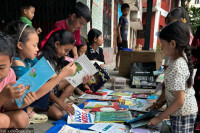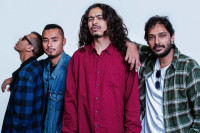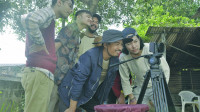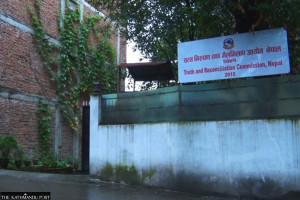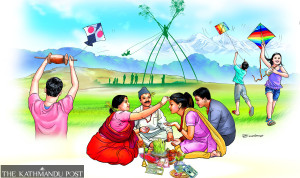Entertainment
I understand Dr Govinda KC
During the 10-hour ride from Kathmandu to Solukhumbu, the only thing I could do was rest my head against the front seat.
Arati Baskota
During the 10-hour ride from Kathmandu to Solukhumbu, the only thing I could do was rest my head against the front seat. There were dark clouds hovering above us, racing with the same pace as our vehicle. I wasn’t scared of the rain and thunder but I did not dare imagine the torrent pouring down, as it could easily affect the fragile road. But I didn’t have time to ponder this for long, as my thoughts shifted to the upcoming visit. This was my first-ever trip outside the Kathmandu valley for volunteering.
I was volunteering at the Khamding Medical Trek 2018, under the mentorship of the incredible professor, Kelly Murphy, and eight students from Stanford University. This eight-day event was not only confined to volunteering but also encompassed social, economic, political, psychological and cultural aspects of rural life.
This trip opened my eyes to the reality of life outside of the cities and especially outside the Kathmandu Valley. During our time there, we were not able to check a person’s swollen leg due to the lack of an x-ray machine at the health post. All we could do was administer some painkillers and refer him to the Phaplu Hospital, which is 5-6 hours away by foot. This one health post, with just two government health workers, was looking after four villages—Jhapre, Tapting, Chyanba and Khamding itself.
Who is responsible for this situation? Is it the locals who voted for leaders who never supported them? Or is it the government itself, which has been touting health as a fundamental right but done little to ensure it? And at this time, some government leaders are fighting to open even more hospitals and medical colleges inside the Kathmandu Valley.
The situation was bad but perhaps it wasn’t the worst. There were many other places in the country, like Olangchung Gola, Humla, Mugu, Rimikot and others, where people continue to die from diarrhea, pneumonia, typhoid and other easily-treatable diseases, either due to a lack of health posts, doctors or proper medication.
In the midst of all this, two things brought me hope. First, I was overwhelmed to learn that a big hospital with excellent facilities, the Wongchu Sherpa Memorial Hospital, was going to be built soon. Some work had started in the memory of the late social worker Wongchu Sherpa of Chyanga village. We need more people like Wongchu in every community, someone who dares to dream of a better life for every villager.
Second, I was impressed with the young students there. During our health training, we taught general health matters like the importance of good nutrition, sanitation, reproductive health, and general physiology to very friendly and interactive Sherpa and Magar community members, especially schoolgirls. Those girls, all of them from government schools, were keen to learn about health matters, especially how to use a stethoscope and a sphygmomanometer. Despite being deprived of many amenities, they were brilliant. Most of them wanted to become doctors, nurses and health workers when they grew up.
These schoolchildren were poor and I knew that the only way they could study medicine was to get a scholarship. They were entitled to scholarships that are allocated for government-school students, but even these scholarships are often taken by private school students who move to a government school in their higher grades just to be eligible for the scholarship.
It was only then that I realised the importance Dr Govinda KC’s demands to improve Nepal’s health sectors. This white-haired doctor, who attempts to influence the government’s functioning, has been fighting for these people, toiling round the clock, raising his voice for the voiceless. But each time, it is the same drama where the government claims to abide by its agreement with Dr KC but does nothing.
So many thoughts crossed my mind. So many experiences remain in my head. And I keep wondering if the government thinks that those outside of the Valley, living in rural village, are worth their time and effort.
Baskota is pursuing an MBBS from Kathmandu Medical College




 20.2°C Kathmandu
20.2°C Kathmandu



